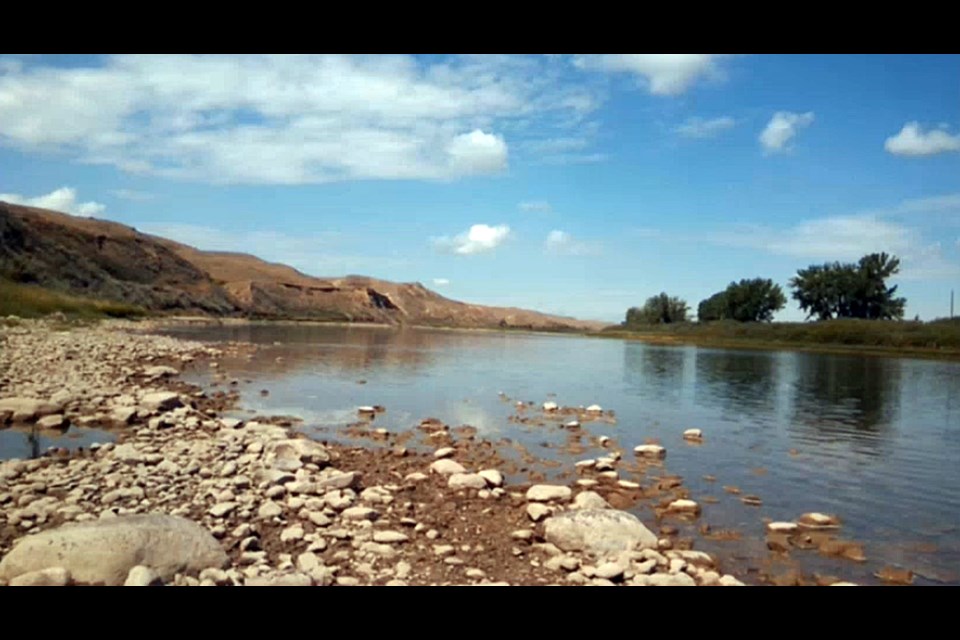INNISFAIL – The growing alarm of Alberta’s critical drought situation has moved closer to home as board members of the Mountain View Regional Water Services Commission (MVRWSC) are meeting in Innisfail this week for a high stakes discussion on a drought plan going forward.
John Van Doesburg, the commission’s chief administrative officer, told the Albertan last week there will be a closed-door strategic planning meeting on Jan. 24 in Innisfail; a meeting that will include robust discussion on the region’s potentially catastrophic drought conditions by board representatives from the commission’s six-member communities.
“They (province) are asking all the municipalities in the province to take a look at their drought plans, and if the province has to start restrictions of licenses we’re prepared,” said Van Doesburg, noting this is the first time the commission has faced a drought situation since forming in 1976.
“We'll be holding our first meeting this Wednesday with our own communities; just starting up the rhetoric of what we've got to do if we have to cut water.
“The province is doing a good thing. They're getting ahead of the problem. The reality is if we don't get good enough water in the southern Alberta region everybody's in trouble, agriculture is in trouble.”
Earlier this month Rebecca Schulz, provincial minister of environment and protected areas, sent a letter to all municipalities to warn them that current significant drought conditions caused by last summer’s low rainfall and high temperatures could get worse later this year.
“The world is also experiencing El Niño, a global phenomenon occurring for the first time in seven years,” said Schulz in her letter. “It’s causing less snow and rain, along with higher temperatures, heightening the potential for significant drought into spring and summer 2024, particularly in southern Alberta.”
Schultz noted Alberta has five stages in its water management plan; ranging from Stage 1, which is a minor drought; to Stage 5, a province-wide emergency.
She added the province is now at Stage 4, which is when multiple water management areas are affected.
Schultz’s letter outlined a four-part plan to communities on water conservation, along with a call to all water users to immediately start planning to use less water in 2024.
She also urged municipalities to stay up-to-date on precipitation and water levels through the Alberta Rivers app or the Alberta Rivers Basins web page at rivers.alberta.ca.
“Without significant precipitation we are expecting water levels in the spring to be dire. I do not use that word lightly,” said Stacey Smythe, assistant deputy minister for Alberta Environment & Protected Areas in a drought risk and management video prepared by the provincial government. “We think this is going to be an incredibly dry year ahead of us.”
Complicating matters is that Alberta allocates its water through a priority system that's set by licensed seniority. The system is known as FITFIR, First in Time. First in Right, and the longer a user has been in it – the more senior the licence, the higher the right to water when it becomes scarce.
“When we get into a situation of wide-scale drought, FITFIR does not offer us a need to prioritize water use based on how it's used. (It’s) only based on seniority of licence,” said Smythe, adding a golf course licensed in the 1930s would have priority over a community's water system that was established in the 1970s.
Van Doesburg said the MVRWSC has a “senior” licence, which allows the commission to get water but if the province declares a drought then all licences become “mute” because the province would then decide who gets priority for water.
On top of the licence issue there is now considerable concern about decreased water flows and volumes from the four major river basins in southern and central Alberta, with the Red Deer River Basin now at 59 per cent of it’s historical natural flow.
Adding to the basin alarm is that Alberta has a provincial agreement with Saskatchewan that obligates the province to send 50 per cent of the natural flow in the South Saskatchewan River to Saskatchewan that's averaged out over the course of the year.
“That agreement between Alberta and Saskatchewan was made many years ago and it’s a fair agreement for everybody,” said Van Doesburg. “If there's a drought situation, that's when it gets tough.
“We all have to work at it; municipalities, the agriculture industry. Nobody wants to cut anybody's water off at any time,” he added. “We want to find ways where we can also conserve and make it work.”
Innisfail councillor Gavin Bates is the town’s current representative to the MVRWSC board. He believes if the drought continues to “rear its head” there'll be pressure on everyone.
Bates said with the Bow and Old Man river basins facing enormous pressures, the Red Deer basin will come under even more pressure to deliver water to Saskatchewan.
“Currently the Bow and Old Man are licensed completely out. The Red Deer is not,” said Bates. “There are still licences available on the Red Deer River.
“The Mountain View water commission has a very senior licence but it still will come under pressure.”
As for the MVRWSC meeting on Jan. 24 in Innisfail, Bates said all commission members will be brought up to focus on what the commission’s expectations might be on how best to go forward with the minister’s urgent call to action.
“It’s an appeal to Alberta municipalities,” said Bates. “It's just opening the eyes of everybody that drought is a big concern.”



